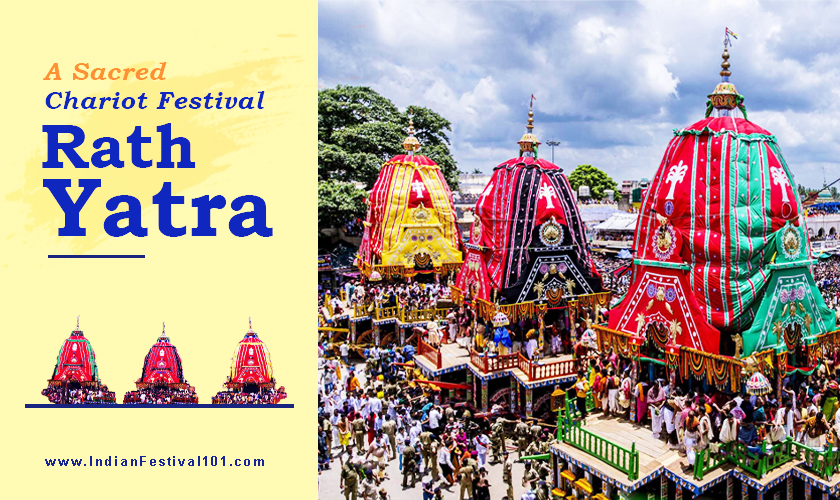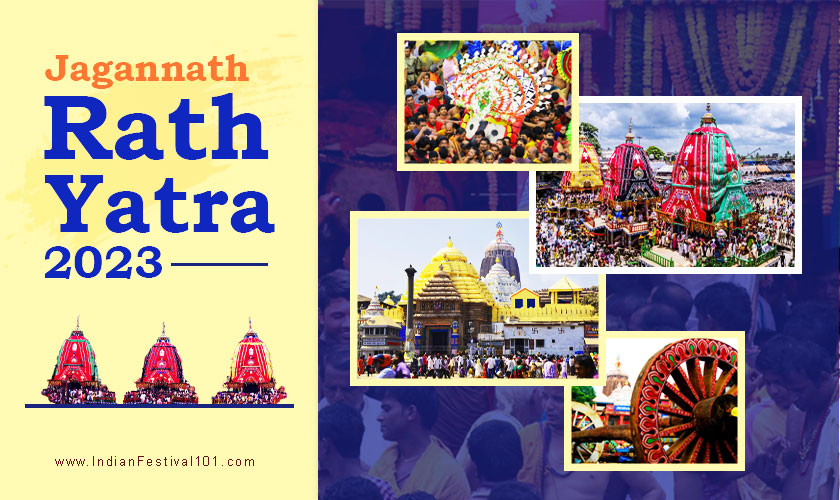The ancient Hindu festival of Rath Yatra, which is observed with incredible passion and devotion, is of extreme significance to Indian culture and spirituality. The majestic procession of Lord Jagannath, his sister Subhadra, and brothers Balabhadra in beautifully decorated chariots is a highlight of this colourful event. Rath Yatra continues to enthral millions of people worldwide because of its legendary origins and long history. We explore the attractive aspects of the Rath Yatra in this article, including its myths, rituals, cultural repercussions, and spiritual significance.
Why Rath Yatra is Celebrated?
In Hindu mythology, the Rath Yatra celebrates the passage of Lord Krishna from Gokul to Mathura. Lord Jagannath, a manifestation of Lord Krishna, and his siblings are central to the narrative. It’s thought that Lord Krishna wanted to return to Mathura, the city where he was born, to be with his followers. As a result, the magnificent Rath Yatra procession represents this famous journey by portraying Lord Jagannath, Subhadra, and Balabhadra driving their chariots on a pilgrimage.
Rituals and Planning:
Months before the festival, planning gets underway. The huge chariots, or raths, are carefully built by skilled craftsmen out of wood, rope, and other conventional materials. Then, these chariots are brilliantly decorated with patterned textiles, floral garlands, and detailed carvings. The idols of Lord Jagannath, Subhadra, and Balabhadra are all skillfully made and ornamented at the same time.
The Main Event
The Rath Yatra starts with a lot of passion and fervour. Numerous thousands of worshippers wait in the streets to see the parade and ask for blessings. During joyful singing and hymn chanting, the chariots are pulled through the prescribed paths by devotees using heavy ropes. The Lord’s yearly visit to his aunt’s residence is symbolized by the journey from the Jagannath Temple to the Gundicha Temple, which has great spiritual significance. Devotees display their rich cultural history by offering prayers, singing devotional songs, and dancing in traditional ways along the route.
Spiritual Significance of Rath Yatra
it is more than just a spectacular display. Pulling the chariots, which stand in for the human body, represents the devotee’s effort to attract the heavenly presence into their lives. Lord Jagannath, Subhadra, and Balabhadra’s idols stand for the divine unity that permeates all living things. Through this event, followers want to feel the Lord’s presence and develop unity, love, and devotion in their lives.
Also Read: Jagannath Rath Yatra in Puri
Celebrations All Over the World:
Although the largest Rath Yatra is held in the holy city of Puri, Odisha, celebrations take place all over the world. Devotees from all over the world come together to rejoice and take part in this wonderful occasion, from Kolkata to Sydney, London, and New York. Every locale adds its special touch, fusing regional traditions and cultural tenets with the fundamentals of the Rath Yatra.
Rath Yatra’s Socio-Cultural Impact:
Beyond its religious and spiritual significance, Rath Yatra is crucial for promoting unity, harmony, and the preservation of cultural traditions. It crosses social barriers to bring people together from various origins. The festival draws people from all over and promotes economic development and tourism. Rath Yatra additionally offers a stage for presenting traditional music, crafts, and arts, aiding in the preservation of cultural legacy.
Rath Yatra continues to fascinate both devotees and observers because of its fascinating legends, intricate ceremonies, and profound spiritual importance. This celebration is evidence of both the strength of solidarity and commitment as well as India’s enduring cultural legacy. Let us embrace the lessons of love, harmony, and inclusivity as we celebrate Rath Yatra and work to preserve and transmit this rich heritage to future generations.





